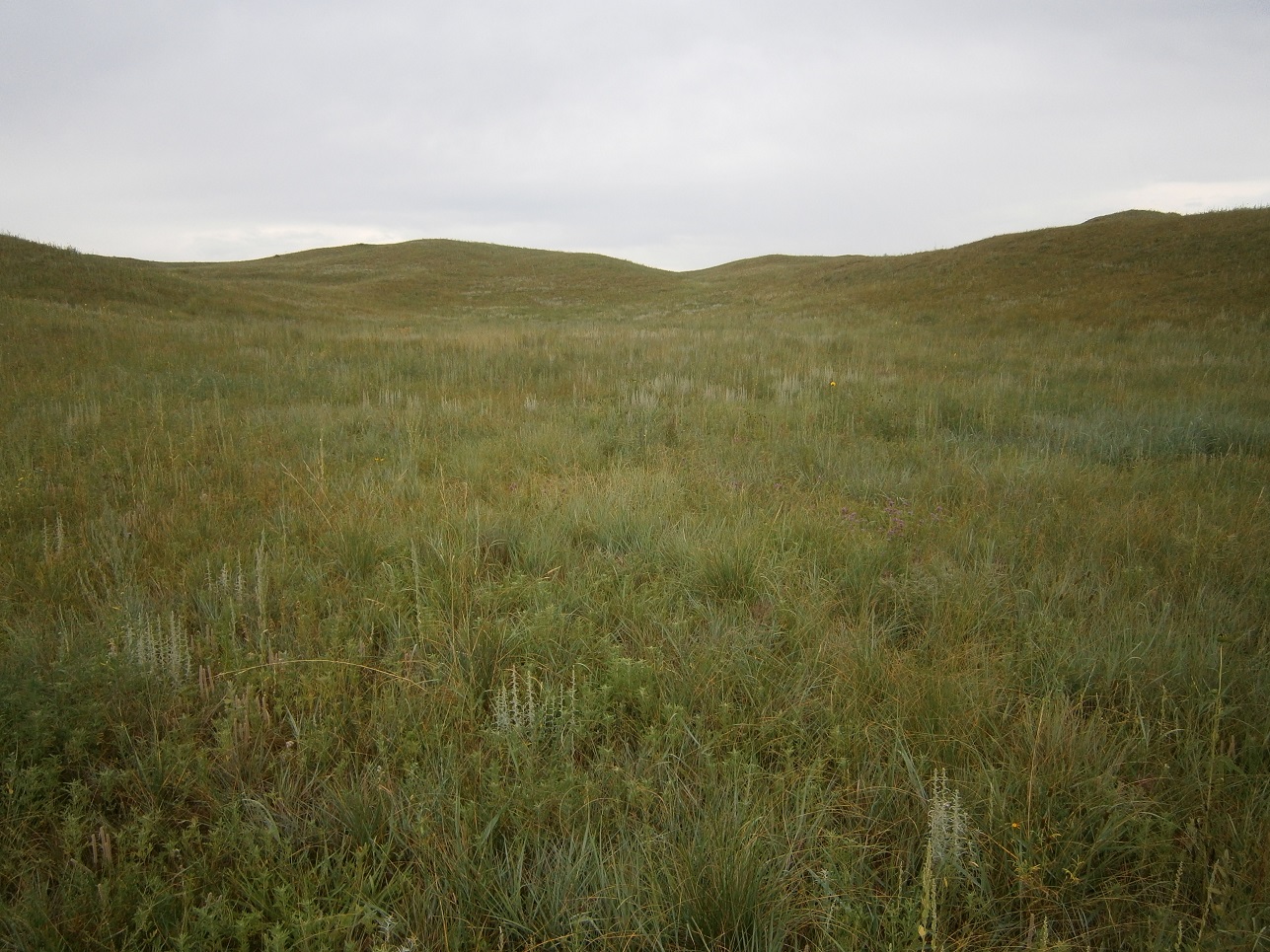By Bethany Johnston
Nebraska Extension Educator

Photo-monitoring uses photographs to capture data about pastures. Photo courtesy of Bethany Johnston.
How easy is it to body condition score your cows? You look at the fat deposits covering the cow’s body. A “fleshy” cow is considered good, while a thin cow may need special attention.
How do you tell if your pasture is “fleshy”? What do you look at to assess plant health?
Determining the health of your pasture is more difficult than looking at the outside fat layer of a cow. A cow’s body condition (or energy reserves) is visible on the outside, but plant health is determined by the vigor of the root system.
Since we can’t dig up the roots, monitoring our pastures is a good way to assess plant health. Weather (precipitation or freezes) and defoliation (from hail or grasshoppers) impacts plant health, but is out of our control. Management (stocking rate, date grazed, etc) is something we can control and impacts plant health. By recording both, future management decisions to improve plant health can be made.
Before we talk about what to monitor, let’s cover what improves or weakens plant health. During green-up, a plant removes energy from its roots to build infrastructure (leaves and stems). With adequate rainfall and favorable temperatures, the leaves create energy that is put back into the infrastructure (more leaves & seedheads) and the excess energy is stored in the roots.
On the other hand, drought stresses plant vigor. Plant growth is usually stunted due to lack of moisture, and the roots also shorten. Heavy defoliation, or removal of plant material, can also stress a plant, as the plant takes reserves from the roots to re-create the infrastructure of the removed leaves. The rapid growth stage is also a critical time for plants. The plant is growing very quickly, but hasn’t been able to store much energy in the roots. Grazing during the rapid growth stage every year will weaken the plant as well.
Late summer and fall are a good time to monitor pastures when plants are mature.
What are some key items to monitor?
*Precipitation: is important especially during the growing season of the forages. Dry conditions stress plants and lead to plant root loss. If rains are lacking, stocking rate decreases can be projected based on rainfall to date.
*Grazing Records: When is the plant getting grazed? What kind of grazing pressure or stocking rate will the pasture need to sustain? How long will the pasture get to rest? Grazing records keep track of the number of animals (figured as Animal Units or AUs), how long the pasture is grazed, pasture size, forage available, and hay fed. The UNL “Grazing & Hay Records Spreadsheet” keeps track of this information on an Excel spreadsheet and summarizes the forage demand & supply.
*Photographs: Photo-monitoring uses photographs to capture data about pastures over time. Plant species and composition, plant size, amount of bare soil, residual (standing herbage) and litter amounts can be useful information when paired with precipitation and grazing records.
Photographs should include a pasture landscape scene http://go.unl.edu/wfrr taken as a Photo Point and Photo Plot http://go.unl.edu/4wif to capture details of the grass and soil surface. To take a Photo Point http://go.unl.edu/p9tc . To take a Photo Plot http://go.unl.edu/cfqk.
More in-depth monitoring techniques can be found in the “Getting to Know Your Pastures: Techniques to Enhance Monitoring” NebGuide G2212. “GrassSnap” is an app developed to take photographs, organize, and store the photo points and plots on your smart device (currently available for Apple products).
Source:unl.edu